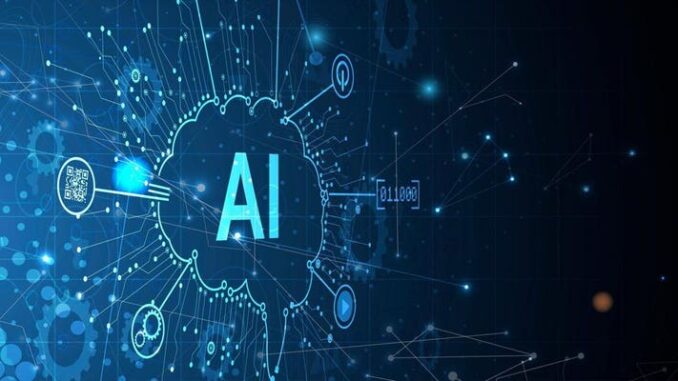
AI systems that identify unexpected occupancy are increasingly being deployed in various settings to enhance security, optimize resource usage, and improve safety.
These systems leverage techniques such as machine learning, computer vision, and real-time analytics to detect and respond to situations where occupancy levels deviate from what is anticipated.











Here’s an overview of how these systems work, their applications, and the benefits they offer.
### How AI Systems Identify Unexpected Occupancy
1. **Data Collection**:
– **Cameras with Computer Vision**: Surveillance cameras equipped with AI-powered computer vision algorithms analyze video feeds to detect and track individuals in real time.
– **IoT Sensors**: Motion detectors, infrared sensors, and door/window contacts collect data on movements and entries/exits.
– **Access Control Systems**: Data from access control mechanisms (such as card readers and biometric scanners) can provide information on authorized entries and exits.
2. **Real-Time Monitoring and Analysis**:
– **Occupancy Prediction Models**: Using historical data, AI models are trained to predict expected occupancy levels at different times of day or during specific events.
– **Anomaly Detection Algorithms**: AI systems continuously compare real-time occupancy data against established patterns. They flag any deviations from expected behavior, such as unauthorized presence or unexpected crowd density.
3. **Alerting Mechanisms**:
– **Notifications**: When unexpected occupancy is detected, the system can trigger automatic alerts to security personnel or facility managers, enabling a quick response.
– **Data Visualization**: Dashboards can display real-time occupancy levels and highlight areas of concern, providing situational awareness.
### Applications of AI Systems Identifying Unexpected Occupancy
1. **Security and Surveillance**:
– **Intruder Detection**: Security systems can identify unauthorized individuals in restricted areas, alerting security personnel to potential breaches.
– **Crowd Management**: In public venues, unexpected occupancy levels can be monitored to prevent overcrowding and ensure safety during events.
2. **Workplace Safety**:
– **Occupational Health and Safety**: Unexpected occupancy in hazardous areas (e.g., construction sites, laboratories) can trigger alerts to ensure worker safety and compliance with regulations.
– **Emergency Evacuation**: Monitoring helps ensure that all individuals can be accounted for during emergencies and assists with safe evacuation procedures.
3. **Retail Analytics**:
– **Detecting Theft**: AI systems can monitor for unexpected behavior patterns in retail environments, such as loitering, which might indicate theft or other suspicious activity.
– **Customer Flow Optimization**: Stores can adjust staffing levels and inventory based on real-time customer occupancy data, ensuring that they meet demand efficiently.
4. **Healthcare Facilities**:
– **Patient Safety**: Hospitals can monitor for unexpected occupancy in restricted areas, ensuring that patients are safe and that sensitive areas (like the ICU) are secure.
– **Infection Control**: In times of health crises, such as pandemics, monitoring occupancy can help manage patient flow and minimize exposure risk.
5. **Smart Buildings and Infrastructure**:
– **Energy Management**: AI systems can detect when spaces are occupied unexpectedly (e.g., out-of-hours use), enabling buildings to adjust HVAC and lighting settings dynamically.
– **Facilities Management**: By understanding usage patterns, facility managers can allocate resources more effectively, optimizing cleaning schedules and maintenance tasks.
6. **Public Transport**:
– **Safety and Security**: Monitoring occupancy levels in public transport systems can help identify overcrowding and enhance the safety of passengers.
– **Response to Unusual Patterns**: Systems can alert authorities to unexpected crowding scenarios that may indicate safety risks or public disturbances.
### Benefits of AI Systems Identifying Unexpected Occupancy
– **Enhanced Security**: By quickly identifying unauthorized presence, these systems improve security response times and help prevent incidents.
– **Increased Operational Efficiency**: Organizations can optimize resource allocation based on real-time occupancy data, leading to better management and reduced costs.
– **Improved Safety**: Timely alerts about unexpected occupancy can assist in maintaining safe environments in workplaces, healthcare facilities, and public spaces.
– **Data-Driven Insights**: The continuous monitoring and analytics provide valuable insights into usage patterns, informing better strategic planning and resource investments.
– **Customer Experience Enhancement**: In retail and public spaces, understanding customer behavior can lead to improved services and environments that cater to user needs.
### Conclusion
AI systems for identifying unexpected occupancy are transforming how organizations manage safety, security, and operational efficiency across various industries. By leveraging advanced analytics and real-time monitoring, these systems enable proactive responses to unexpected events, ensuring that spaces are used responsibly and safely. As AI technology continues to evolve, the capabilities and applications of these systems will expand, offering even greater benefits in managing occupancy scenarios.

Leave a Reply